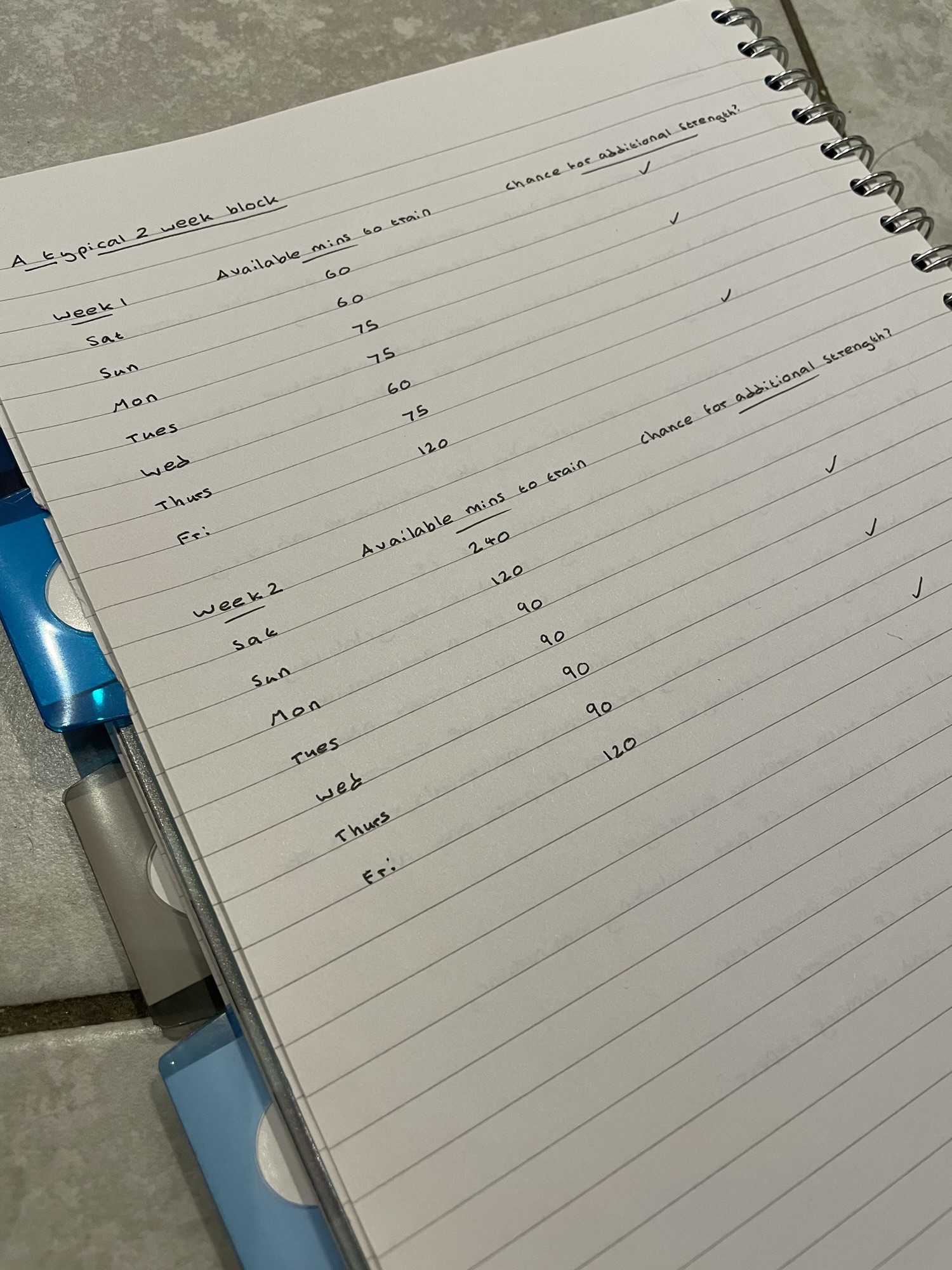Now that the marathon and the Baslow Bolt fell race is out of the way, there is nothing standing between me and my first 50k race, in March. No more races, just 14 weeks of training. Scary.
The question then, is how to train. I often search online and find a training plan, most of the time a free one, and try to follow it to the letter. And there’s plenty out there if that’s what I wanted to do. I followed an Inov-8 one for the marathon, and they do a similar one for 50k (along with other distances). There is also Some Work all Play (SWAP), which is David and Megan Roche’s company, who do a selection of plans. If you’ve not heard of David Roche yet, he’s an ultra runner who trains (and races) “using science,” and has been breaking records at races in America recently. He and Megan also have a podcast which I’ve recently started listening to. The level of joy, and love, is at times a bit sickly, but there’s plenty to be learnt if you wanted to check it out.
Browsing through a Facebook group, for something unrelated, I noticed a recommendation for a book entitled Training for the Uphill Athlete. I’ve seen this book mentioned a few times now, and always with glowing thoughts. It’s since made it’s way onto my Christmas list, but there is a lot of information on their website. It goes about explaining, what they define, as the best way to train for long distance and big elevation events. Essentially, it involves a lot of aerobic training, some strength work and a touch of high intensity work.
Here is the link if you wanted to have a read yourself. Also, here are the links for the Inov-8 50k plan that I mentioned, along with the SWAP version.
It’s interesting to see how different they all are. Whereas The Uphill Athlete promote increasing your aerobic base with lots of low intensity training, the Inov-8 plan starts off with two speed sessions per week right from week one. The SWAP one is somewhere in between, with one hard hill session per week along with one hill strides workout.
Who knows what the best approach is. In reality, it’s likely to be different for different people. The science behind the Uphill Athlete approach is that you will be completing your event at a relatively low intensity. Therefore, you need to work on your economy at a low intensity. Makes sense. The science behind the SWAP approach is based on scientific studies. In one of their podcasts, they discuss the correlation between VO2 max and endurance performance. How high, top-end, 5km race pace directly translates to faster times over longer distances.
I look at it and conclude that both are probably true. The Uphill Athlete is correct in that your event is likely to be performed at a low, sub-threshold intensity. But your sub-threshold intensity is related to what your threshold intensity is. Imagine your VO2 max is your ceiling. If you increased that, then you would have more space to work on, and improve, your sub-threshold pace. If you don’t work on improving your VO2 max, then there are only so many gains that you can get from trying to train your lower intensity limits.
If you read through the training guidelines on the Uphill Athlete site, I believe they are saying the same thing as the Roche’s. Without copy and pasting, they suggest improving your sub-threshold limits so that they are sufficiently close to your threshold, and then begin to work on pushing the ceiling higher so that you can improve your sub-threshold further. Hopefully you’re still with me. I’m aware that I’m hugely summarising.
For a recreational runner who is merely looking to finish his first 50km, and not race it, the Inov-8 plan feels too intense. I followed an Inov-8 plan for the marathon and ended up injured a couple of weeks before the big day. Maybe related, maybe not. And given that there isn’t actually a great deal of time now before I line up on race day, I feel like I will get more benefit from the lower intensity work than I would from the higher. So, the Uphill Athlete approach it is then, of trying to grow as big an aerobic base as possible before race day. As suggested on their website, I will aim to add in some higher intensity work as the race gets closer but, for now, it’s all about that base!
In terms of the plan itself, The Uphill Athlete do sell training plans for a variety of distances and goals. But a piece of text on their site felt like a personal challenge: “Honestly, it is not that hard to write an effective training program. For those willing to roll up their sleeves and do some work, a careful reading of Training for the Uphill Athlete and the application of the various training plan templates will get you off to a good start.” Challenge accepted, and hence why the book is now on my Christmas list.
I plan to write my own training for the race, planning two week blocks at a time. This will give me chance to gauge how I respond to the training, and adapt if necessary. It will also allow me to better plan my time and create a more solid plan. There is no point writing out an entire plan when I don’t know what my availability is going to be like in eight weeks time. After all, this is how a coach would do it. Wish me luck…


